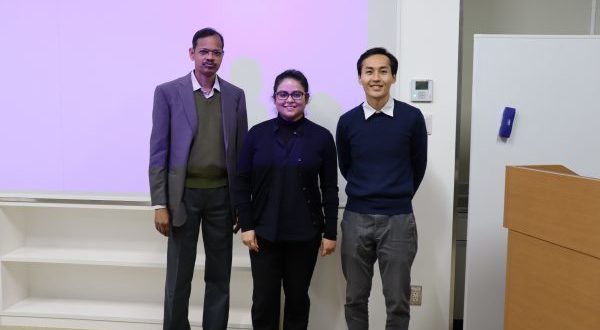
Report on the 4th WRHI Lecture (December 12)
Report on the 4th WRHI Lecture (December 12, 2018)
The 4th WRHI lecture meeting was held on December 12 in the Open Communication Space of R2 building. This lecture is a place for WRHI invited researchers who are active at the forefront of the world to provide the latest topics and discuss them. This time there were three lectures, each from computational biology, materials and brain science fields. Moderator was Dr. Naoto Ohtake who is the Associate Director-General of Institute of Innovative Research in the first half, and Dr. Masaki Azuma who is the Professor of Laboratory for Materials and Structures (also WRHI Steering Committee Chairman) in the second half.
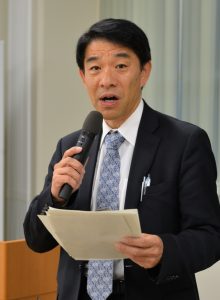 Moderators were Associate Director-General Ohtake (left)
Moderators were Associate Director-General Ohtake (left)
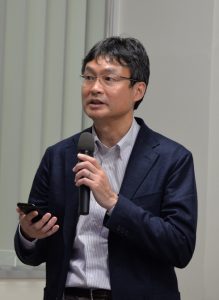 and Professor Azuma (right)
and Professor Azuma (right)
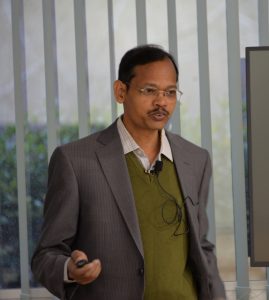
The first speaker was Dr. Michael Gromiha, a Professor of the Department of Biotechnology in the Indian Institute of Technology Madras, and invited as a Specially Appointed Professor of the Advanced Computational Drug Discovery Unit at our university. His lecture theme was “Integration computational methods and experimental data for understanding the binding affinity of protein-protein complexes”.
Every biological system within a cell is controlled by proteins. However, due to their structures, dynamical foldings, stability and interactions, research on proteins has become a very challanging field of scientific elucidation. To solve this problem, he examined interatomic distances and solvent exposure areas in a protein-protein complex of a three-dimensional structure to identify binding sites at the interface. Then, he has developed an analytical method to obtain the interaction energy by computer simulations. In addition, he created a database for protein-protein binding affinity and estabilshed computational tools to predict the characteristics of interprotein complexes.
A way to refer to many cases by utilizing a computer like this is a method of selecting a specific protein or small molecule from various possibilities. And it is expected to be effective not only for exploring the scientific mechanism of protein structure and functions but also for timely development of drug discovery.
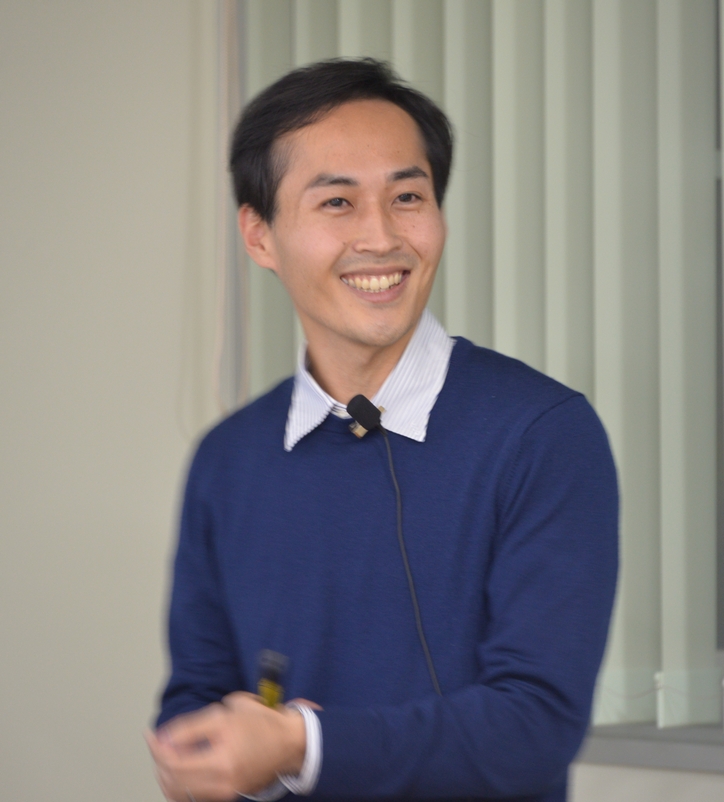
The next lecture was “How humans move, interact, and adapt to their environment” by Dr. Atsushi Takagi. He was assigned from Imperial College London, UK to the Biointerfaces Unit of our university as a Specially Appointed Assistant Professor in 2017. His field of expertise is computational neuroscience, and the subject of research is human-human interaction.
How do people adjust their physical movements when two people carry baggage or dance? There are various ways to exchange information between human and human, but here he focuses on physical forces, especially haptics. Pairs of subjects are recruited, and each holds onto the handle of their own robotic interface. Individual subjects track a moving target by moving their hand, which is displayed as a cursor on their own monitor. The two subject’s hands can be connected by a virtual elastic band. Each subject senses the haptic forces on their hand that come from the partner’s movements, which enable the subject to learn the tracking task faster than when practicing alone. Such haptic coordination is confirmed to be further improved by increasing the number of subjects to 3 and 4 people. In addition, similar results are obtained by replacing one of the two subjects with a robotic partner. His results suggest that individuals infer the partner’s goal through haptics, and the sensory integration of the target’s position through vision and haptics enables physically interacting subjects to improve their task performance.
His research could help in the development of cooperative robots that estimate the intention of a human partner, and could yield a robotic physiotherapist that could help multiple patients with stroke simultaneously.
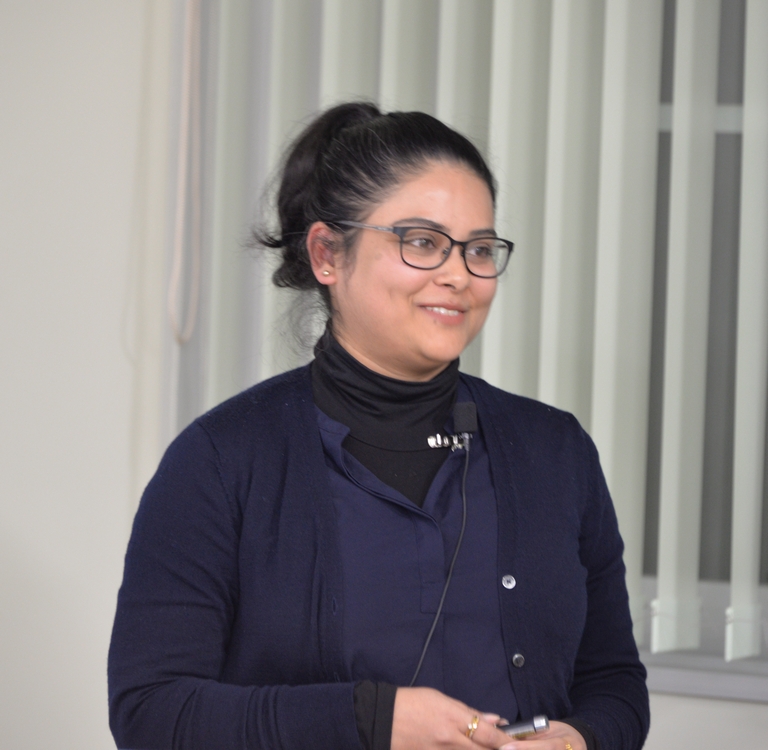
The last lecture of today’s seminar was titled “Material Specific Theoretical Approach to Understand and Predict Quantum phenomena in Materials” and was delivered by Dr. Hena Das. She is a Specially Appointed Associate Professor at the Laboratory for Materials and Structures, who was assigned from Cornell University in the US.
Her field of expertise is theoretical materials physics, which aims to create new high-performance materials that have diverse scientific and commercial applications. She investigates microscopic origin of properties of materials that show various characteristics such as ferromagnetism, ferroelectricity, magnetoelectric effect, spin current and negative thermal expansion. Such quantum phenomena can be understood and predicted by using a model Hamiltonian constructed through the application of Density Functional Theory, a technique pioneered by Dr. Walter Kohn which earned him the Nobel Prize in Chemistry in 1998. In this way, it is possible to analyze phase stability and macroscopic phenomena in real materials at finite temperature. In today’s seminar, she elaborated upon her latest work wherein she discussed the stability of structural phases of Ni based Li-ion oxide electrode material as a result of oxygen loss during battery charge-discharge process. She also discussed in detail the consequences of the formation of the oxygen deficient phases on the performance of a battery and directions of improvements.
In this way, the method to investigate the microscopic world of substances based on the theoretical system and to proceed with synthesis and verification of candidate substances is innovative and versatile. We are expecting the development of new materials greatly.
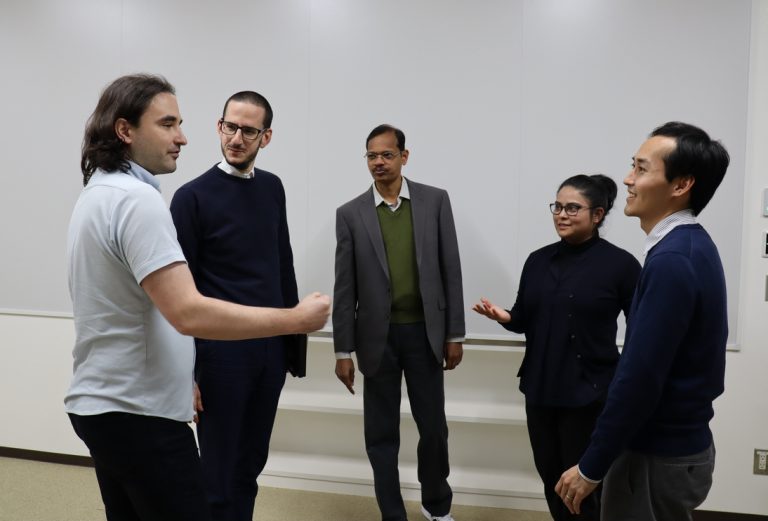
By the end of the lecture, the sunlight of December was completely sunk but the circle of discussion continued around the lecturers.
